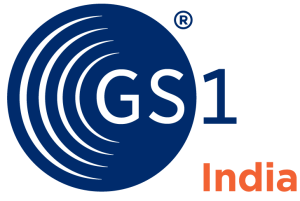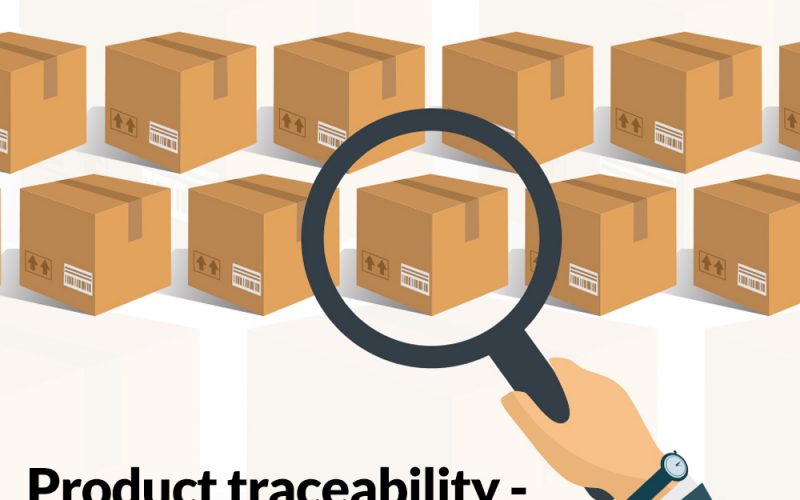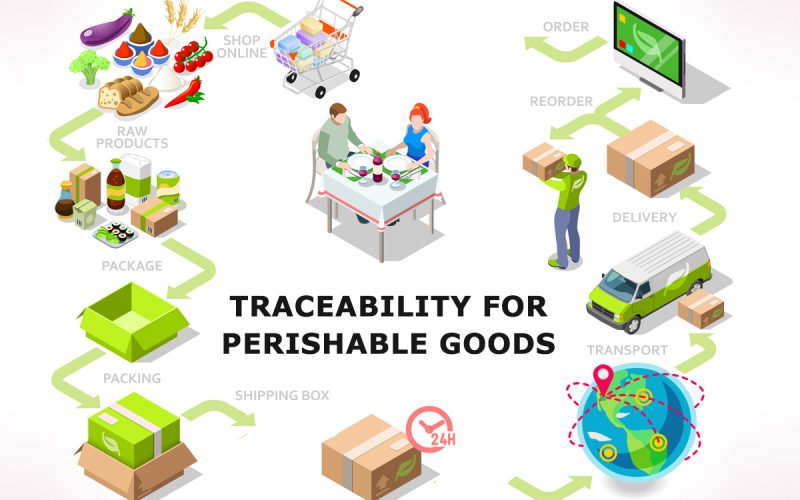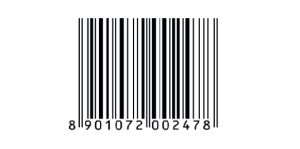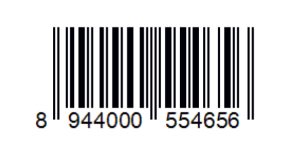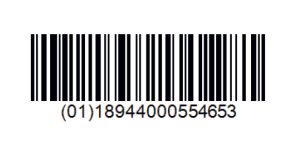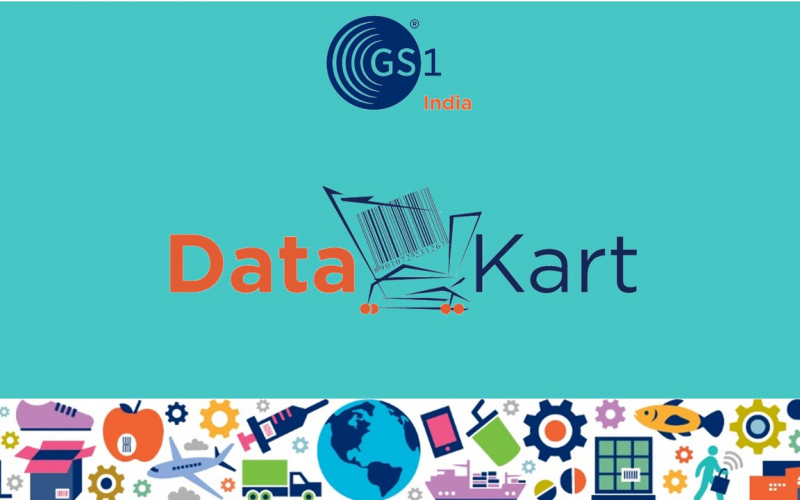What is RFID (Radio Frequency Identification)?
Radio Frequency Identification (RFID) is a wireless communication technology that uses electromagnetic or electrostatic coupling in the radio frequency portion of the electromagnetic spectrum to identify an object, animal, or person uniquely. Tiny tags are attached to products, each containing an antenna and a microchip. The antenna captures radio waves from a reader device, which sends a signal to the microchip. The microchip then transmits its unique identification data back to the reader.
What is Barcoding?
Barcoding is the process of using a beam of light to scan the black and white lines of a barcode. The scanner detects the reflected light and translates it into text, which is then sent to a computer or database. Barcode scanners need a clear line of sight and can only capture one barcode at a time.
Is RFID Better Than Using Barcodes?
When deciding between Radio Frequency Identification (RFID) and barcodes, it’s essential to consider your specific needs and balance factors such as security, cost, and ease of implementation. Barcodes are cost-effective, easy to use, and widely adopted across various industries, making them accessible for businesses of all sizes. They are ideal for straightforward applications but have limitations in data capacity and require line-of-sight scanning, which can be time-consuming.
On the other hand, RFID offers high efficiency, with the ability to read tags quickly from a distance without direct line-of-sight, and can store more information with better security features. However, RFID systems are more expensive to implement and require more complex technology and training.
Ultimately, the choice between RFID and barcodes depends on specific use cases and business requirements. Barcodes remain relevant for their simplicity and cost-effectiveness, while RFID is advantageous for larger operations needing enhanced efficiency and data management.
A hybrid approach may often be the best solution, leveraging the strengths of both technologies where they are most effective.
How Does RFID Work?
RFID technology operates through the interaction between an RFID reader and an RFID tag. The reader emits Radio Frequency (RF) signals via its antenna, which radiates this RF energy. The RFID tag, attached to an item or material, absorbs the energy to “power up” its embedded chip. Once powered, the tag transmits data back to the reader. The reader’s antenna captures this returned RF signal, and the reader decodes the information. The decoded data is then sent to a connected system for further processing and decision-making.
What are RFID Tags and Smart Labels?
RFID tags are small electronic devices that use radio frequency signals to transmit data about an item to an RFID reader. They consist of a microchip and an antenna. Smart labels, on the other hand, combine traditional barcode labels with RFID tags, offering both visual and electronic tracking capabilities, enhancing inventory management and product authentication.
RFID tag elements
RFID tags consist of two main elements: electronic circuitry and an antenna.
- Electronic Circuitry: This includes a microchip that stores and processes information. The microchip typically contains a unique identifier and possibly other data pertinent to the item it is attached to. It is responsible for managing the communication between the tag and the RFID reader, including encoding and decoding the transmitted signals.
- Antenna: The antenna is responsible for transmitting and receiving radio frequency signals. It captures the RF energy emitted by the RFID reader and uses it to power the microchip. Once the chip is activated, the antenna transmits the stored data back to the reader. The design and size of the antenna can vary depending on the frequency and range required for the application. Together, these elements enable RFID tags to efficiently communicate information wirelessly, enhancing tracking and inventory management capabilities.
RFID tag types
RFID tags come in three types: passive, semi-passive, and active.
- Passive: Passive RFID tags do not have an internal power source. They rely on the electromagnetic energy transmitted by the RFID reader to power up the microchip and transmit data. These tags are cost-effective and have a long lifespan but have a shorter read range, typically up to a few meters.
- Semi-passive: Semi-passive RFID tags contain a small battery to power the microchip but still rely on the RFID reader’s signal for communication. This battery enables better performance and a longer read range than passive tags, making them suitable for applications requiring higher reliability and read accuracy.
- Active: Active RFID tags have an internal battery that powers both the microchip and the transmission of data. This allows for continuous signal broadcasting and the longest read ranges, often up to hundreds of meters. Active tags are ideal for tracking high-value assets or in environments where real-time location tracking is crucial. However, they are more expensive and have a limited battery life.
What are the Types of RFID Systems?
RFID systems are categorized based on their operating frequencies: Low Frequency (LF), High Frequency (HF), and Ultra-High Frequency (UHF).
Low Frequency (LF) RFID
Operating between 30 kHz and 300 kHz, LF RFID systems have a short read range of up to 10 cm. They are less sensitive to interference, making them suitable for environments with metal or water. Common applications include animal tracking, access control, and anti-theft systems.
High Frequency (HF) RFID
Operating at 13.56 MHz, HF RFID systems have a read range of up to 1 meter. They are widely used in smart cards, ticketing, and payment systems due to their moderate read range and faster data transfer rates. HF systems can also support Near Field Communication (NFC) technology.
Ultra-High Frequency (UHF) RFID
Operating between 300 MHz and 3 GHz, UHF RFID systems offer the longest read range, up to 12 meters, and can read multiple tags simultaneously. They are ideal for inventory management, supply chain logistics, and asset tracking. UHF systems can be more susceptible to interference from metals and liquids, requiring careful implementation.
RFID Applications and Use Cases
RFID technology has diverse applications across various industries, enhancing efficiency and accuracy.
In retail, RFID tags streamline inventory management by providing real-time tracking of products, reducing stockouts and overstock situations.
In healthcare, RFID ensures the accurate tracking of medical equipment, supplies, and patient identification, improving patient safety and asset utilization. The logistics and supply chain sector uses RFID to monitor the movement of goods, enhancing visibility and reducing losses during transit. Manufacturing industries employ RFID for tracking parts and materials, optimizing production processes, and ensuring quality control.
Additionally, RFID is widely used in access control systems for secure entry to buildings and restricted areas, and in transportation for automated toll collection and vehicle tracking. These varied use cases highlight RFID’s versatility and its ability to drive efficiency across multiple domains.
RFID Security and Privacy
RFID technology, while highly efficient, raises important security and privacy concerns.
- Unauthorised Access: RFID tags can be read by unauthorized scanners, leading to potential data breaches and theft of sensitive information. To combat this, encryption and authentication protocols are implemented to secure the communication between tags and readers.
- Eavesdropping: Hackers can intercept RFID signals, capturing data being transmitted. Strong encryption methods help mitigate this risk.
- Cloning and Spoofing: Criminals can replicate RFID tags to gain unauthorized access or create counterfeit products. Advanced cryptographic techniques and unique tag identifiers enhance security.
- Privacy Concerns: Individuals worry about being tracked without their consent through RFID-enabled items. Privacy measures, such as disabling tags after purchase or using protective covers, can alleviate these concerns. Balancing the benefits of RFID with robust security and privacy practices is crucial for its widespread adoption.
Frequently Asked Questions
1. What are the common applications of RFID technology?
RFID technology is widely used in so many sectors like Retail, Healthcare, transport & logistics, supply chain, and manufacturing industries, etc. In the retail sector, RFID provides real-time product tracking. In Healthcare, it enhances safety and efficiency by tracking medical equipment, supplies, and product identification. The logistics and supply chain sectors use RFID to monitor the movement of goods. Manufacturing industries use RFID to track parts and materials.
2. How secure is RFID technology?
RFID technology incorporates several security measures, such as encryption and authentication protocols, to protect data from unauthorized access. However, it can still be vulnerable to threats like eavesdropping, cloning, and spoofing. Advanced cryptographic techniques and unique tag identifiers enhance security. Implementing robust security practices is crucial to mitigate these risks and ensure the protection of sensitive information.
3. Are there any health risks associated with RFID technology?
RFID technology operates at low power levels and uses non-ionizing radio waves, which are generally considered safe for humans. Studies have shown that RFID systems pose no significant health risks under normal usage conditions. However, as with any technology, it is essential to adhere to regulatory guidelines and safety standards to minimize any potential risks.
4. Can RFID tags be deactivated or removed?
Yes, RFID tags can be deactivated or removed. Some tags are designed to be easily deactivated after their purpose is fulfilled, such as during the checkout process in retail stores. Tags can also be physically removed from items if necessary. Protective measures, like using RFID-blocking sleeves or covers, can prevent unwanted scanning.
5. How does RFID differ from NFC (Near Field Communication)?
RFID and NFC both use radio frequency technology for wireless communication. However, RFID typically has a longer read range and is used for applications like inventory management and asset tracking. NFC operates at a shorter range, usually within a few centimeters, and is commonly used for secure transactions, such as contactless payments and data transfer between devices. NFC also supports two-way communication, allowing devices to exchange information interactively.
6. Can RFID tags be easily cloned or copied?
While basic RFID tags can be susceptible to cloning or copying, advanced RFID systems incorporate security features like encryption and unique identifiers to prevent such actions. Implementing robust security protocols and using high-security tags can significantly reduce the risk of cloning and ensure the integrity of the RFID system.
7. What are the costs associated with implementing RFID solutions?
The costs of implementing RFID solutions vary based on the scale and complexity of the system. Expenses include the cost of RFID tags, readers, software, and infrastructure setup. Passive RFID tags are generally cheaper than active ones. Additionally, ongoing maintenance and security measures contribute to the overall cost. Despite the initial investment, RFID can offer significant cost savings and operational efficiencies in the long run.
8. Are there any environmental considerations with RFID tags?
RFID tags, like other electronic devices, have environmental considerations. The production and disposal of RFID tags can impact the environment. Recycling and proper disposal of RFID components are essential to minimize environmental harm. Additionally, some RFID tags are designed to be environmentally friendly, using biodegradable materials to reduce their ecological footprint.
.png)

